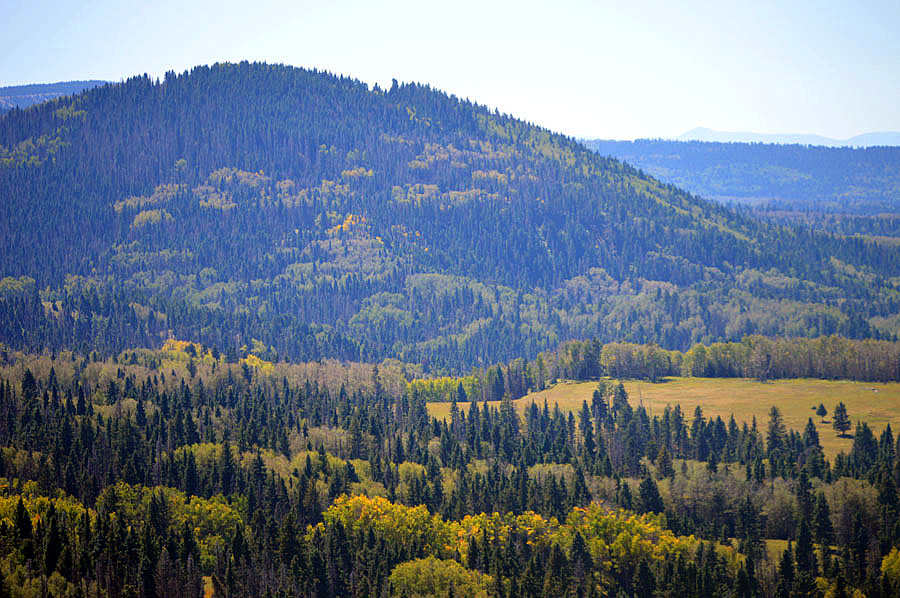
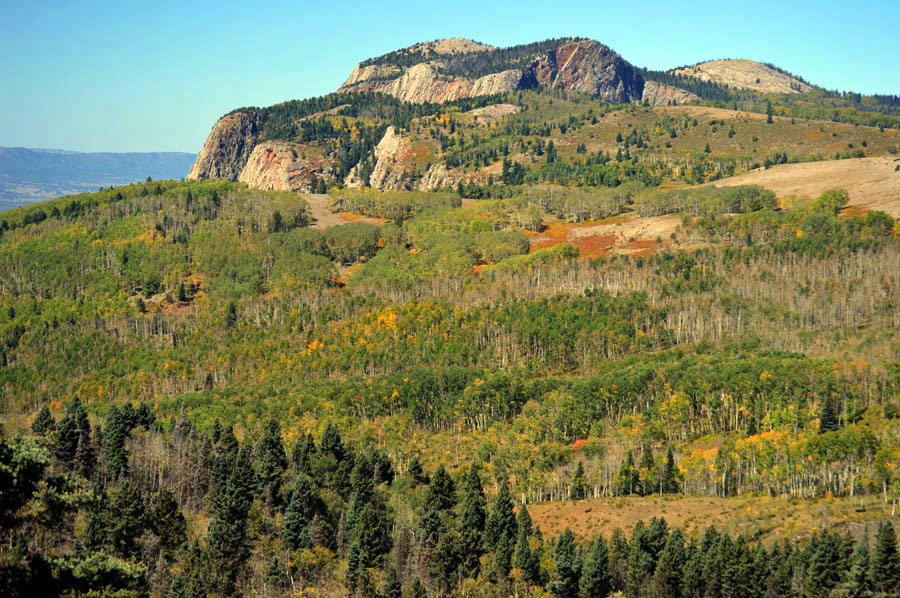
Above the drive to Taos across the San Juan Mountains through the Kit Carson National Forest is quite beautiful, pristine and very untraveled. In early September at almost 9000 feet the aspens were already turning gold. Then one descends from these heights to the Rio Grande valley and Taos….
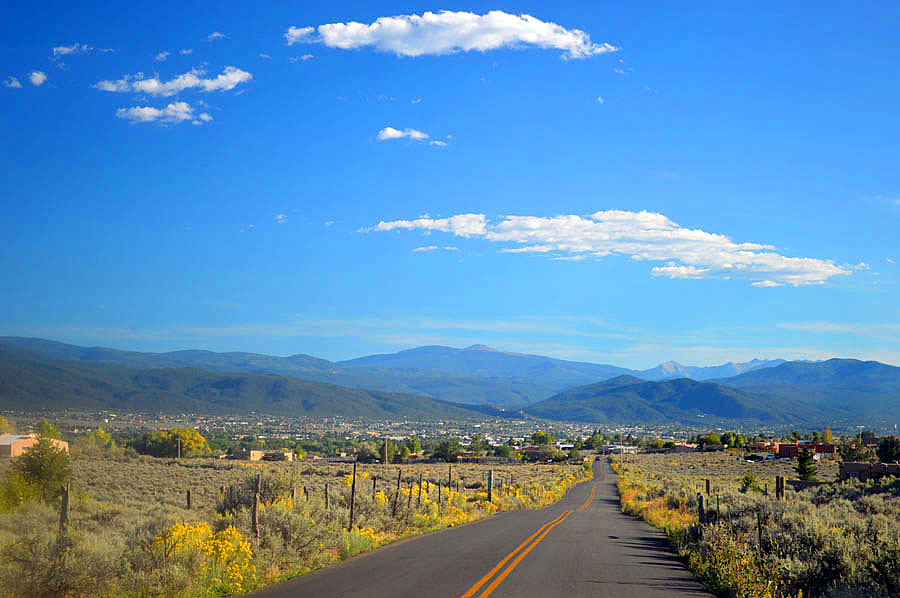
The road into Taos with the Sangre de Christo mountains in the background.
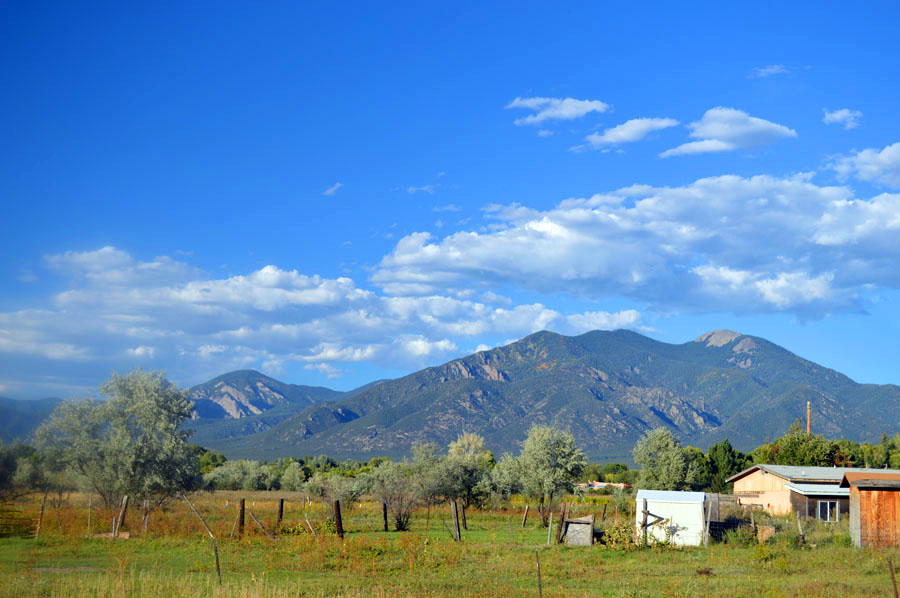
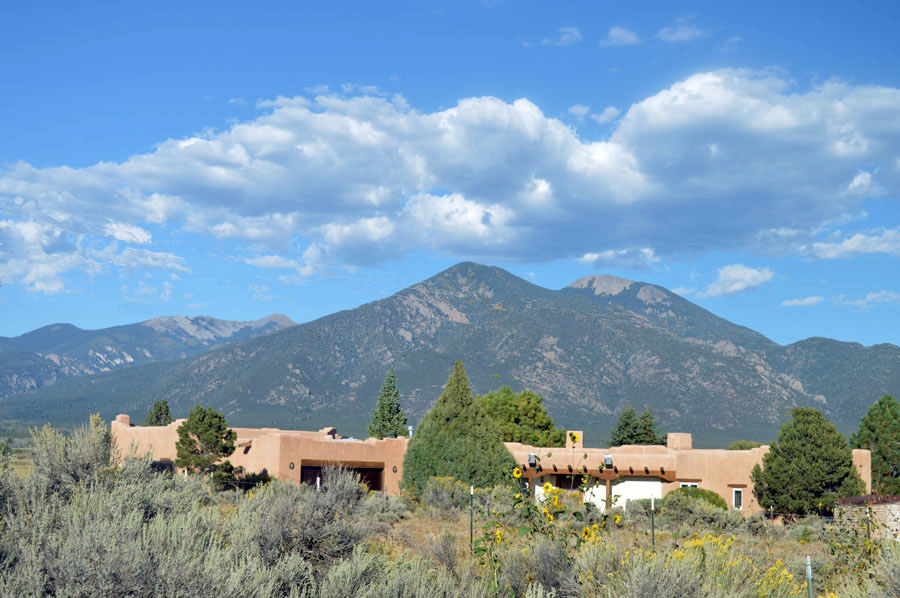
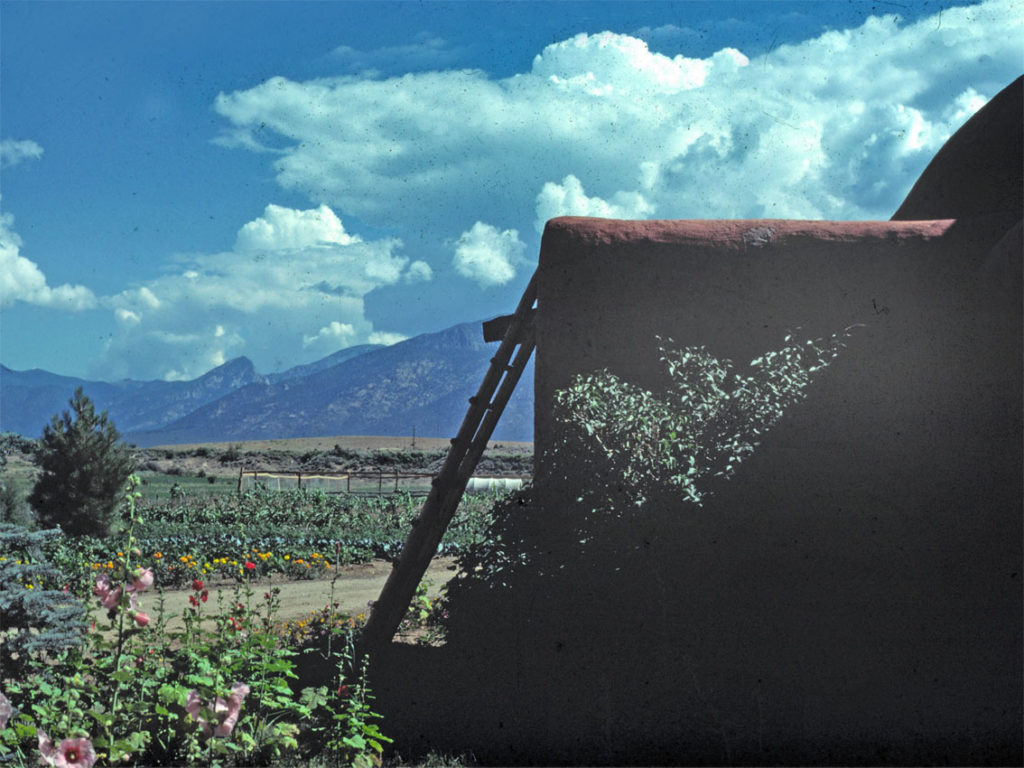
The photo above I took in Taos some 38 years ago (excuse quality) and now this house is surrounded by trees and the fields are now all housing. We were interested to see how the town had faired in the years between and were happy to see it has not gone too far down the way of “development”. It still has a small town feeling.
Below- The Plaza at sunset.
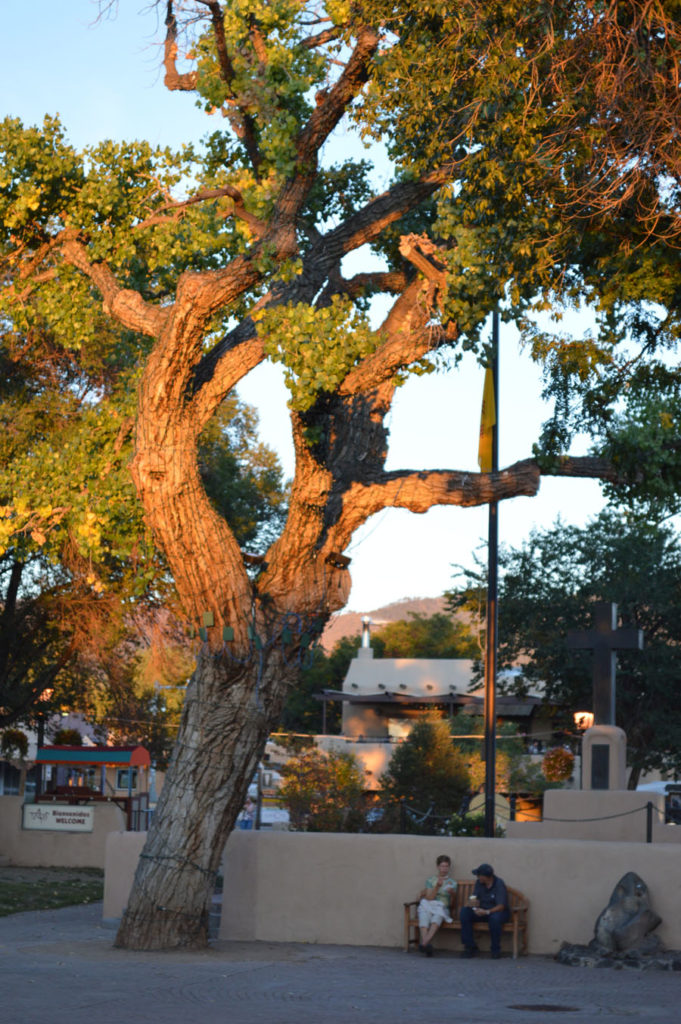
Below–The colours of the sky and the earth are a staple of the local architecture.
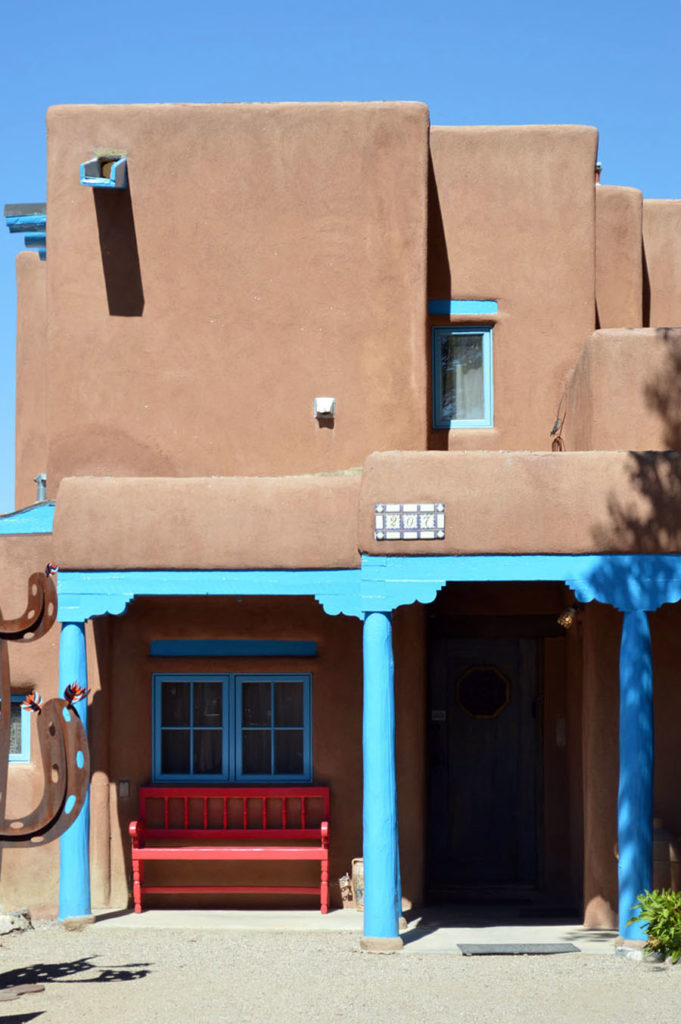
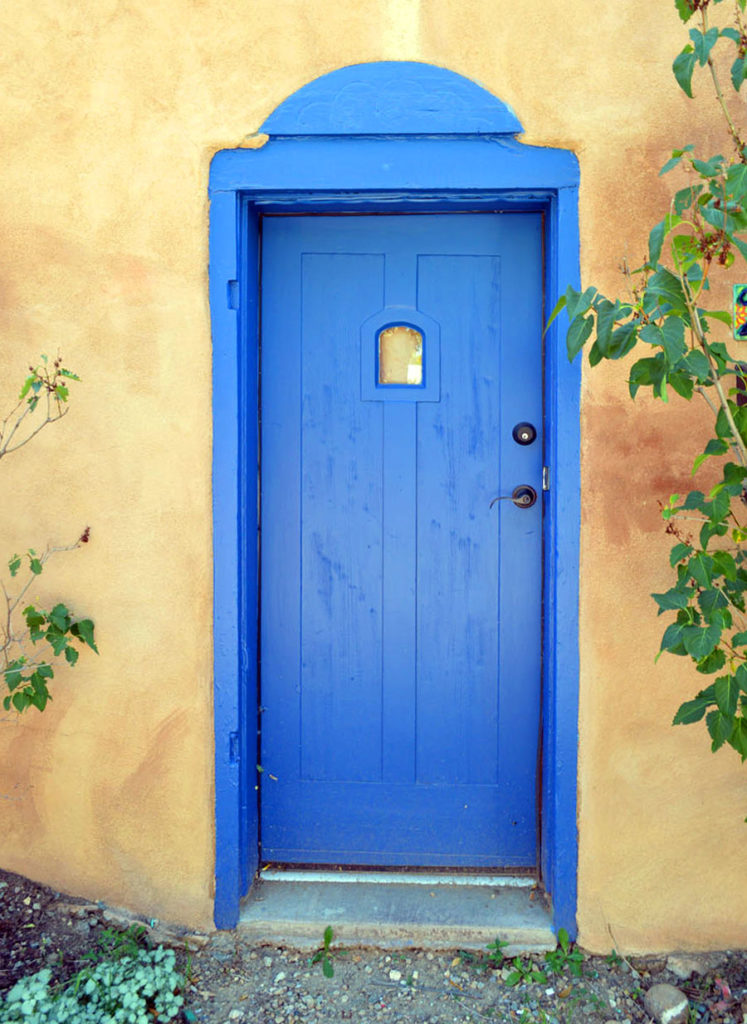
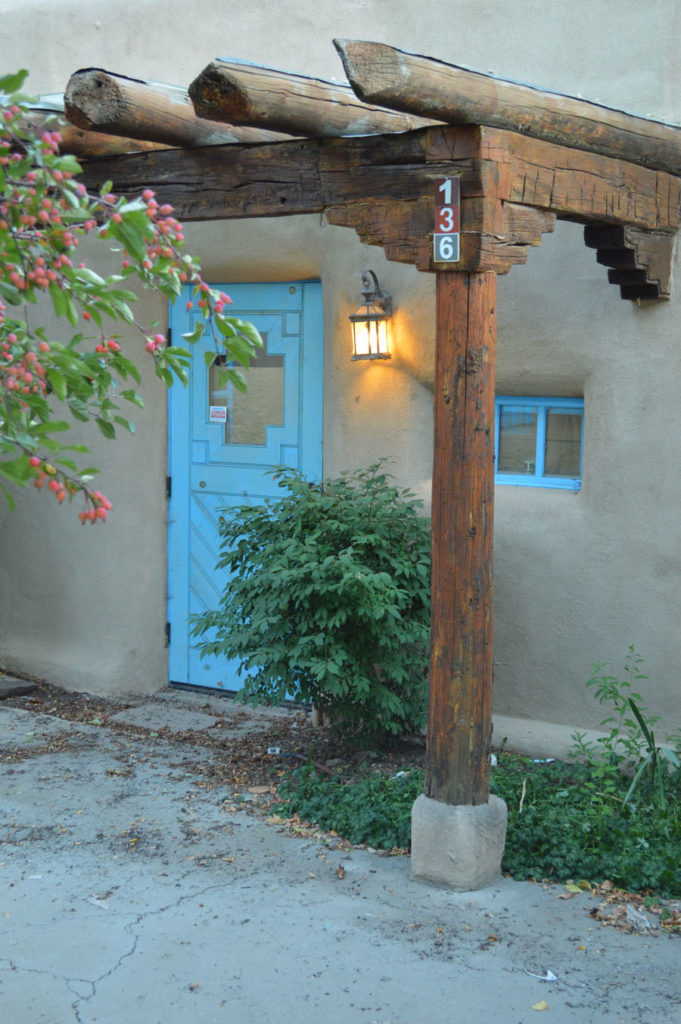
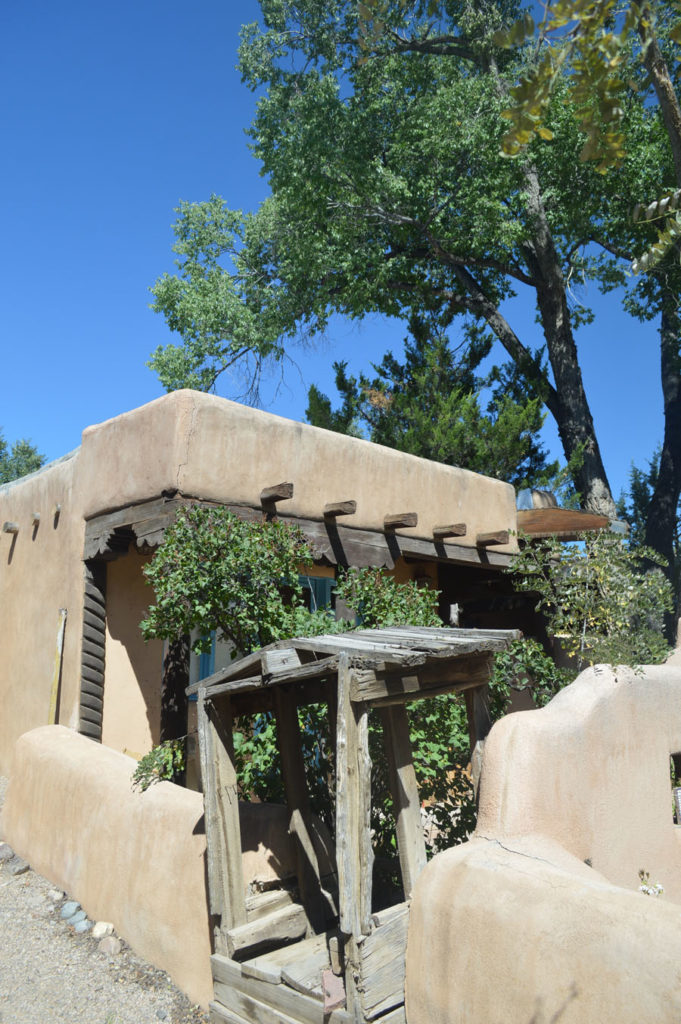
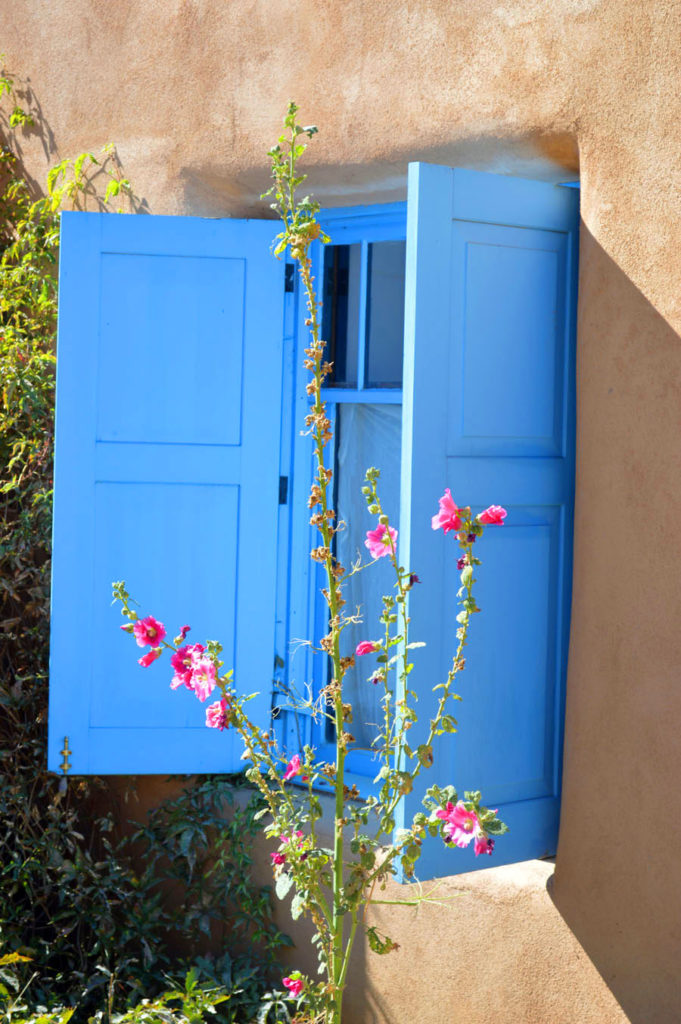
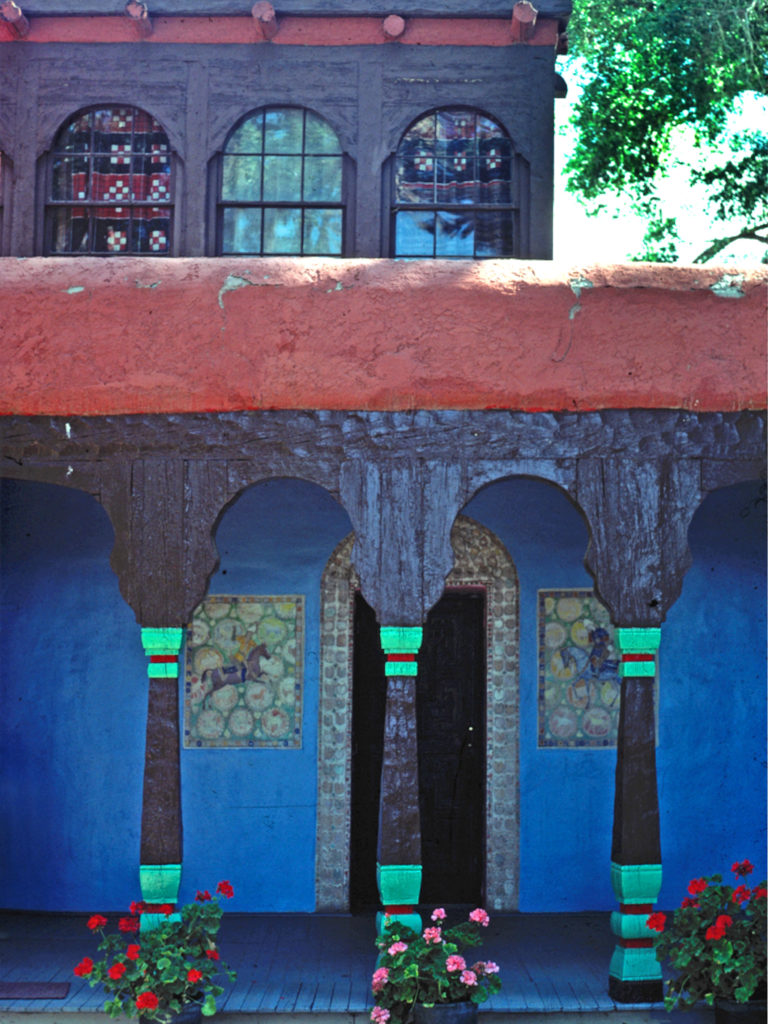
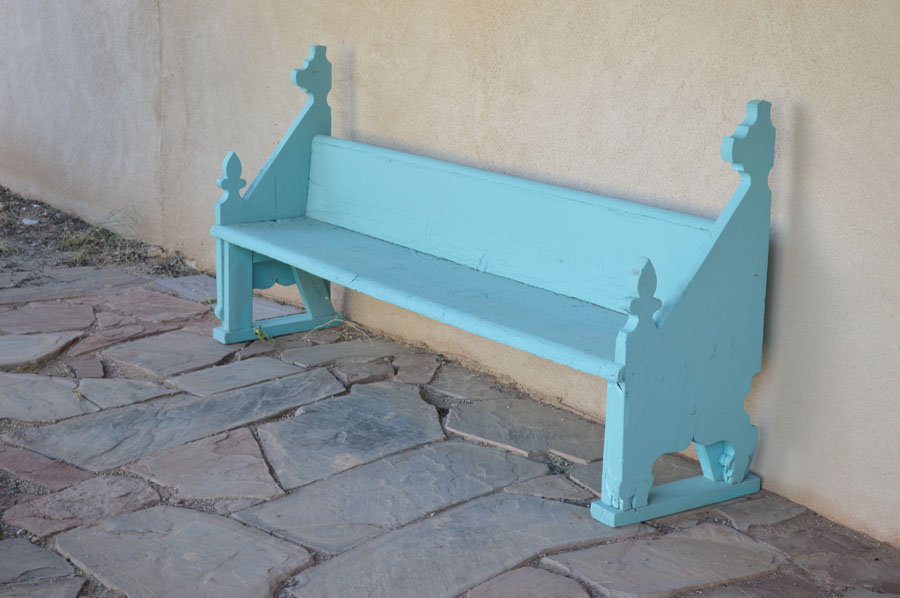
________________________________________
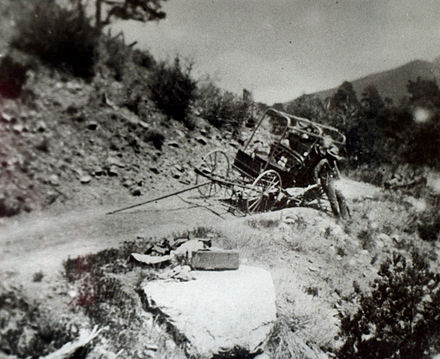
In the early autumn of 1898, a fortuitous accident resulted in Taos becoming a great American art colony. Artists Ernest L. Blumenschein and Bert G. Phillips were on a painting trip from Denver to Mexico when the wheel of their wagon broke on the mountainous road just north of Taos. Ernest Blumenschein made the twenty-mile trek to Taos with the broken wheel. The delay gave them time to become captivated by the spectacular landscape and remarkable cultures of the Taos Valley. Blumenschein and Phillips spread the word about the incredible beauty of Taos and urged other artists to come and see for themselves. Which they did giving Taos a great patrimony of art.
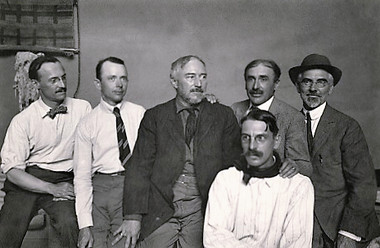
Above-The original artists who comprised The Taos Six.
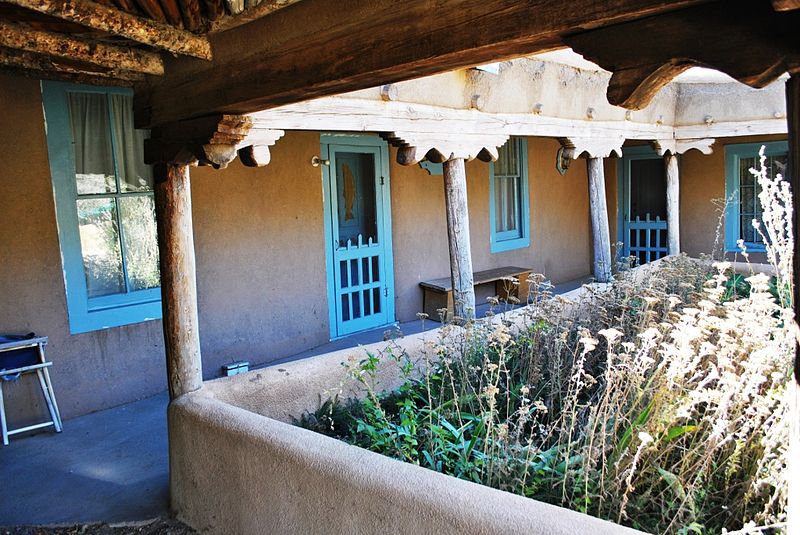
Above and below- the Ernest Blumenschein House and studio.
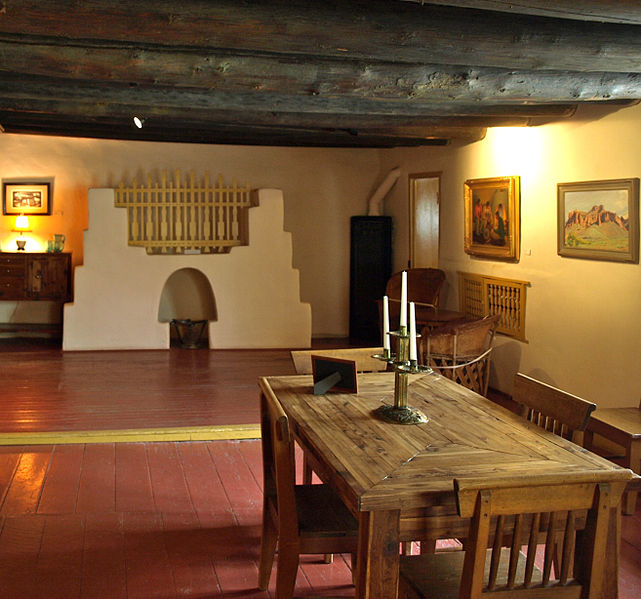
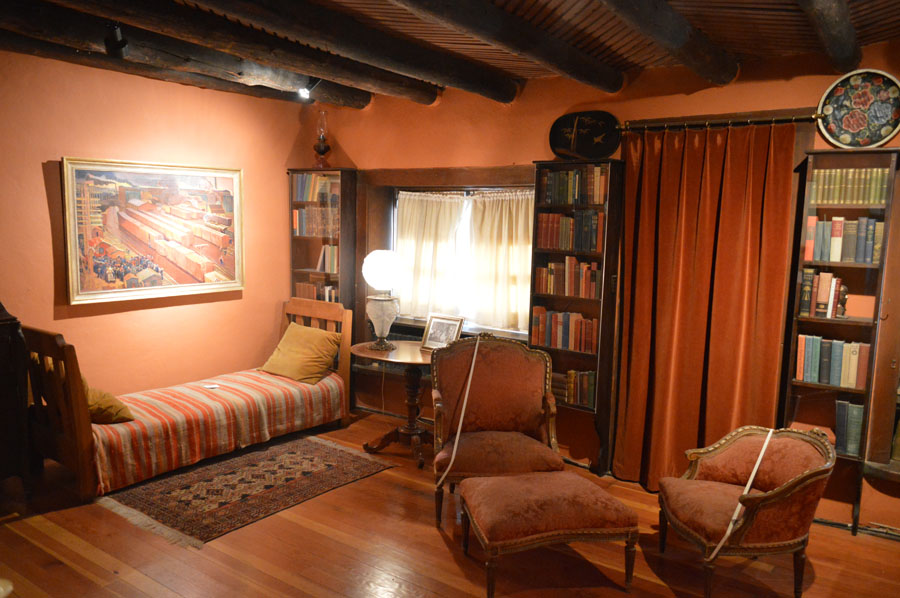
Below his daughter (also an artist) photographed in the same iconic doorway.
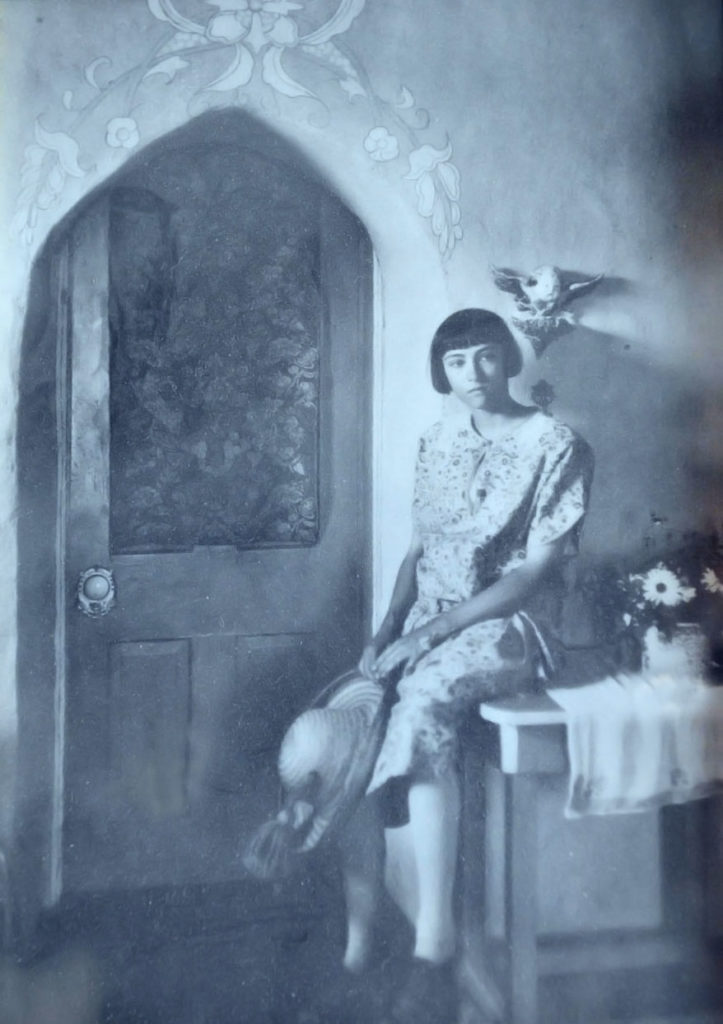
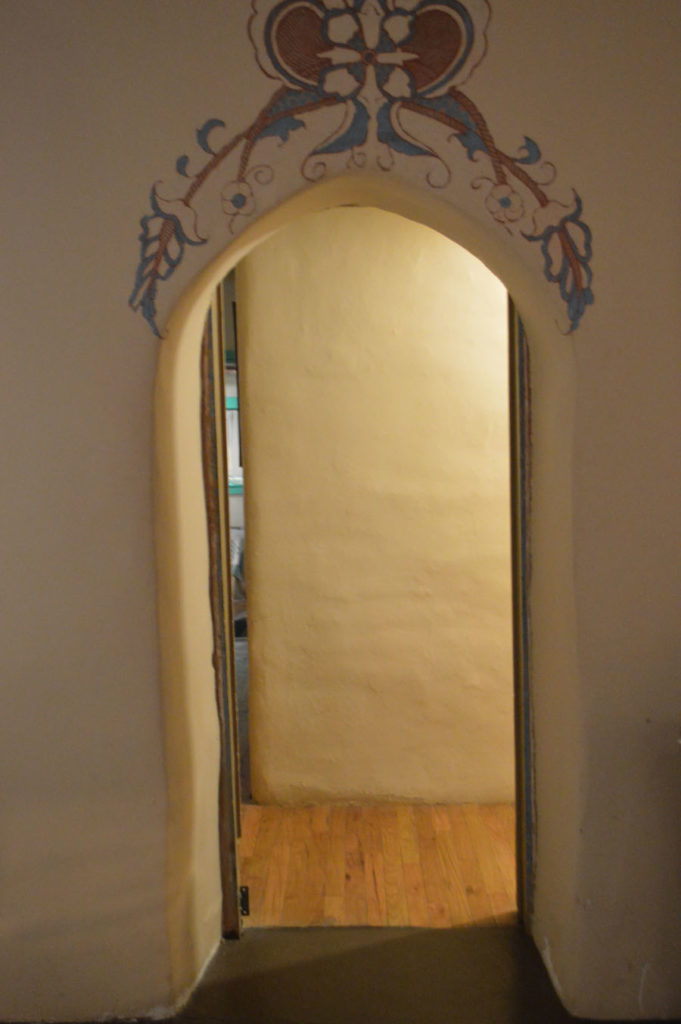
Below-paintings on the walls of the house.
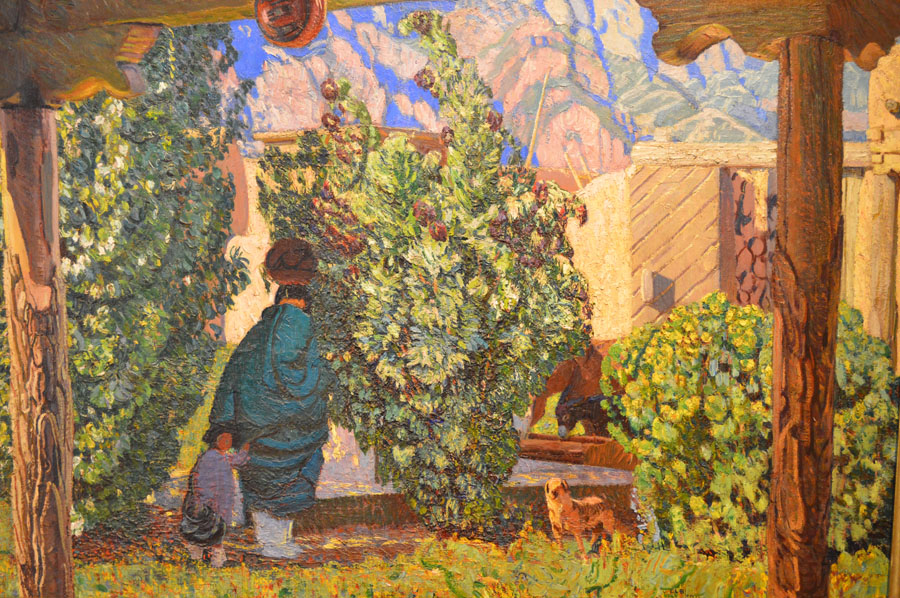
Below-Husking Corn (1939) by Mary Blumenschein his wife. (Mary Sheppard Greene).
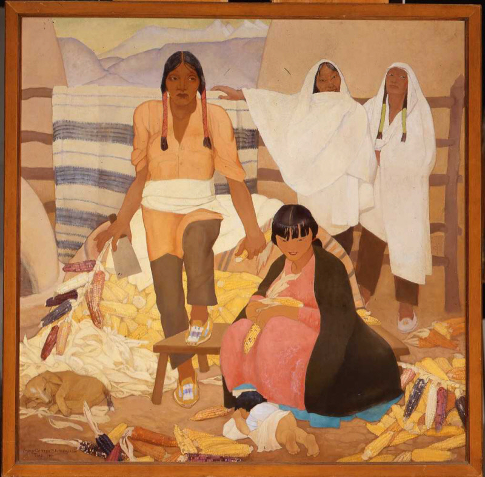
Below- a woodblock print by Gustav Bauman
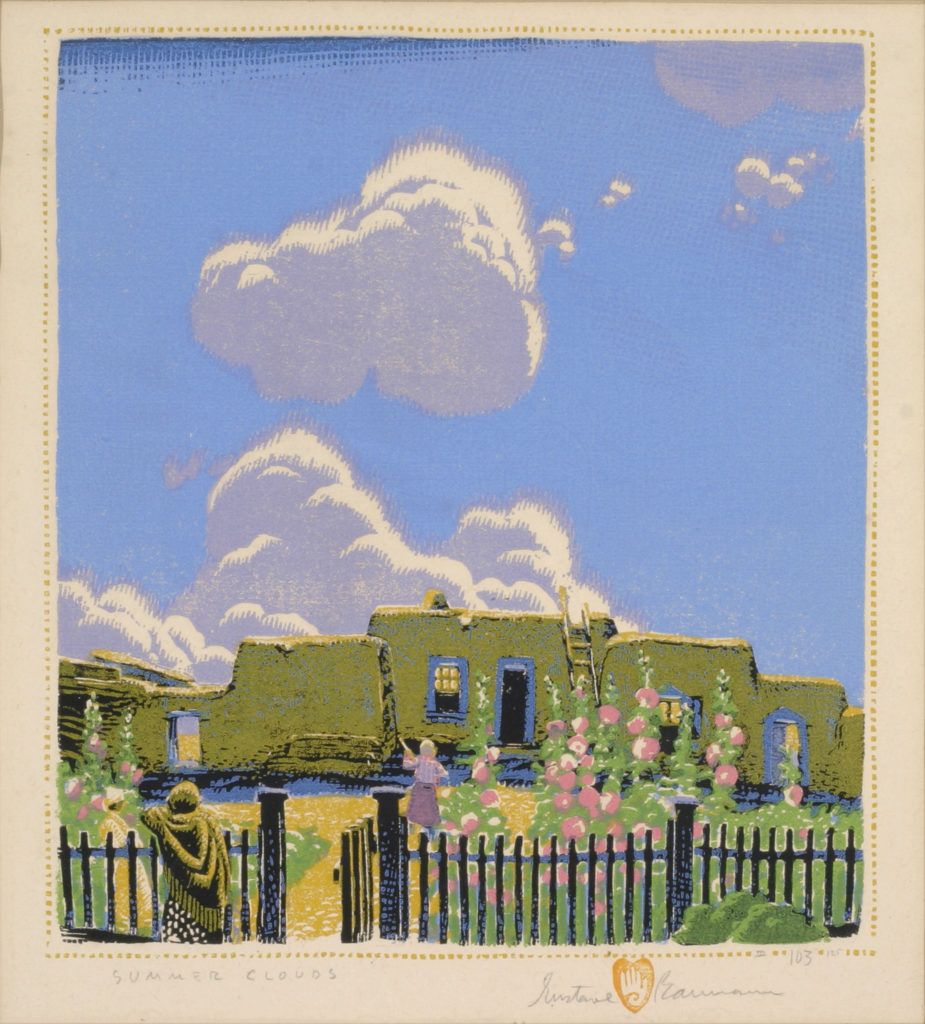
Below a piece by Herbert Dunton who they bought the house from originally.
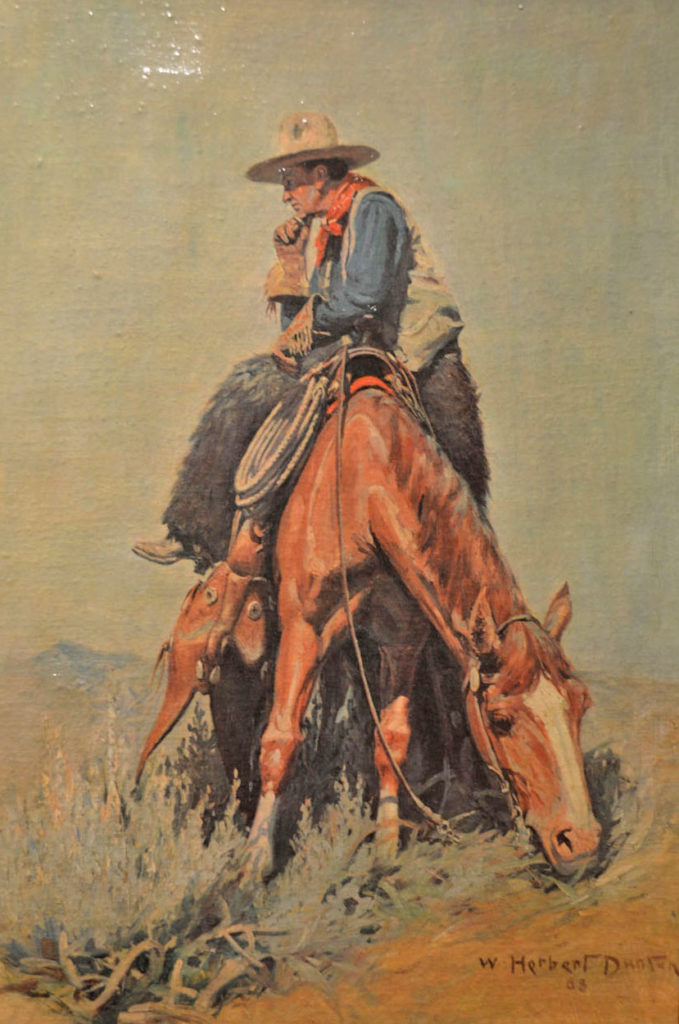
In 1915 the Taos Society of Artists, was formed sending exhibitions of their paintings across the country and exposing audiences to Taos and it’s culture. This put Taos “on the map” for art and tourism, making it one of the most important art colonies in America. The Society lasted until 1927, by which time there were 12 active members which included: Bert Phillips, Ernest Blumenschein, Irving Couse, Henry Sharp, Oscar Berninghaus, Herbert Dunton, Julius Rolshoven, Walter Ufer, Victor Higgins, Martin Hennings, Kenneth Adams, and Catherine Critcher. With the arrival of the art patron, Mabel Dodge Luhan, (see below) the art community expanded rapidly.
__________________________________________
NICOLAI FECHIN (1881-1955) was a renowned Russian (Kazan) artist already before he immigrated in 1923 to the U.S.
The climate of New York did not suit his health and so Fechin traveled west and in 1927 eventually settled with his family in Taos, New Mexico. The mountains reminded him of Siberia. He felt particularly close to the Indians, and his greatest works done in the United States were of the Native Americans. The biggest collection of his work however is in his native Russia.
The Fechins purchased a two-story adobe house, and spent several years modifying it . He also carved doors according to Russian style, created triptych windows, and carved furniture for use in the house, which reflects a combination of modernist, Russian and Native American sensibility. He eventually moved to California where he died in 1955.
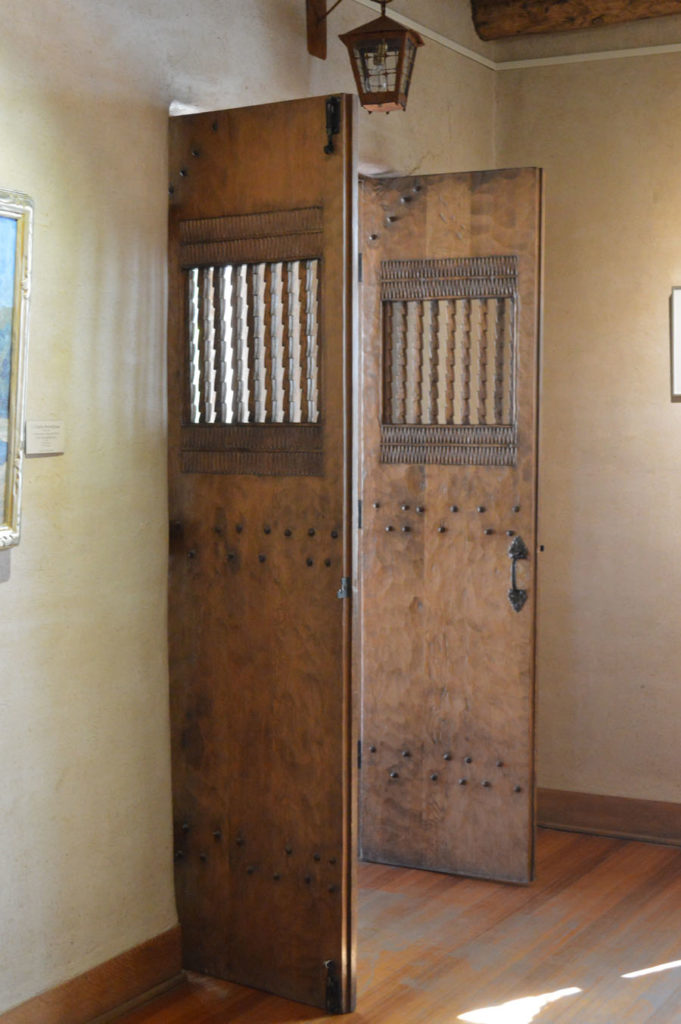
Above- Fechin learned carving from his father. He originally did sculpture as art but enjoyed the more direct creative process of working in wood and so much of the house is his own furniture and detailing.
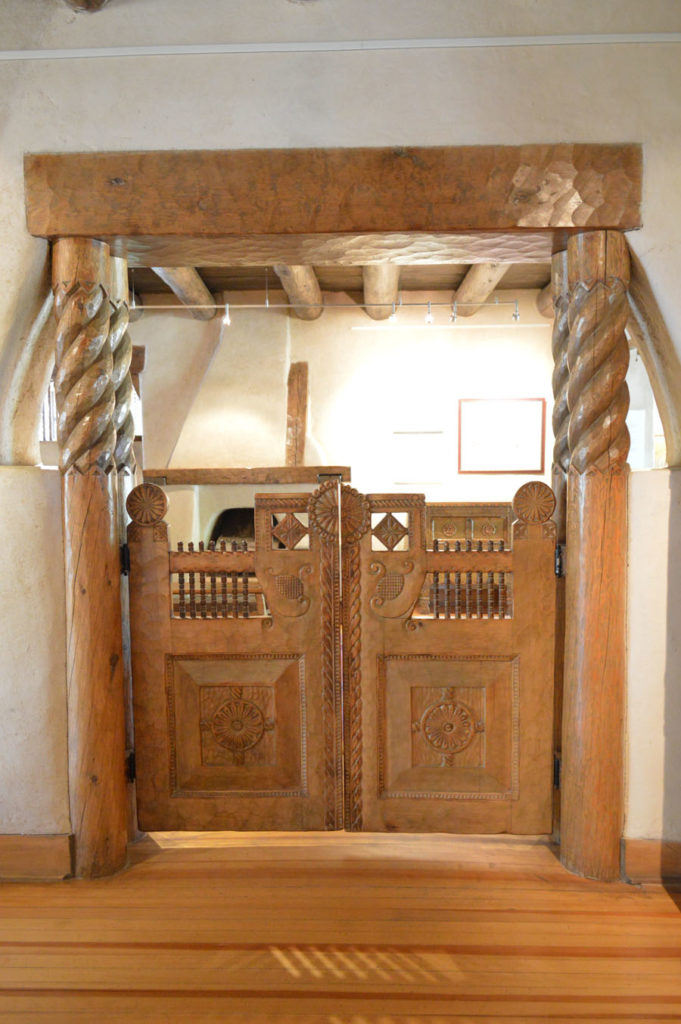
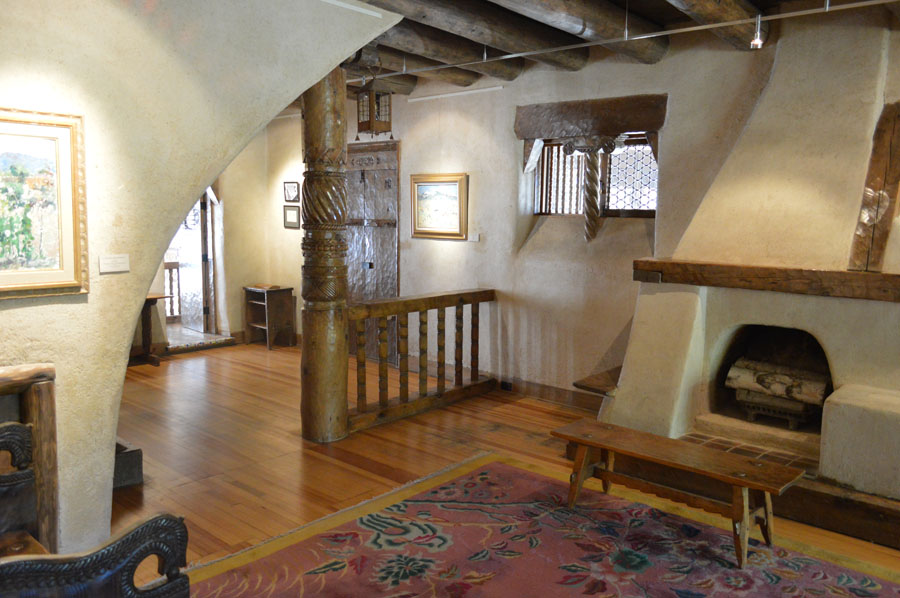
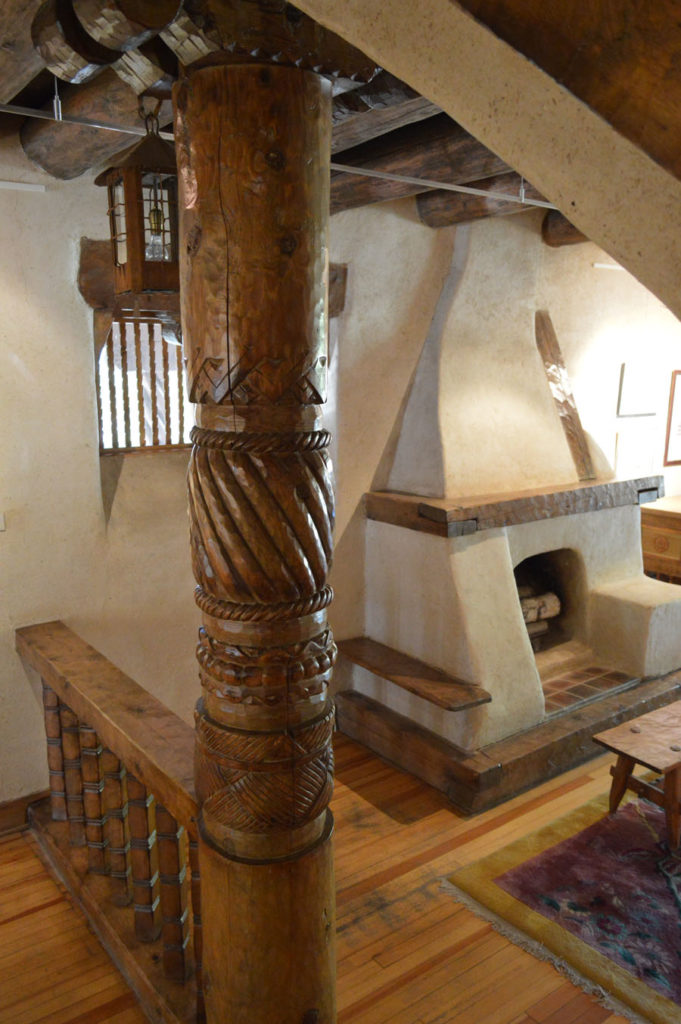
Below-two self portraits.
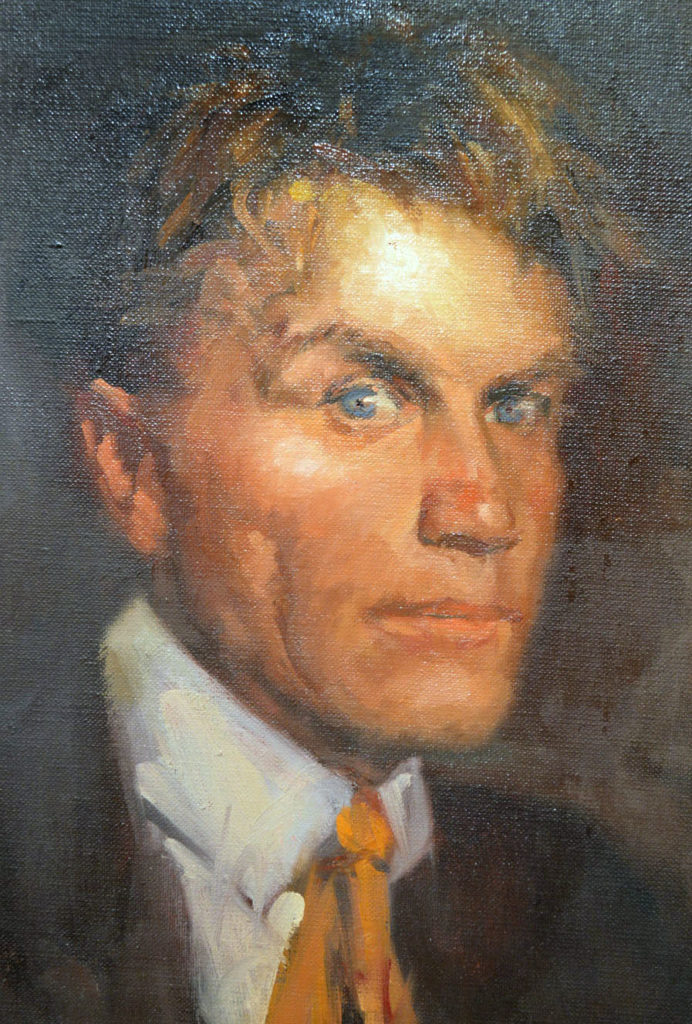
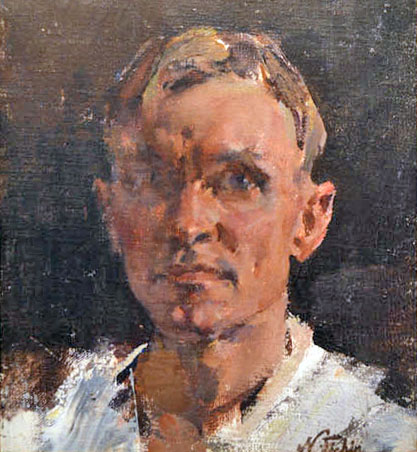
…and of his wife Alexandra and his daughter.
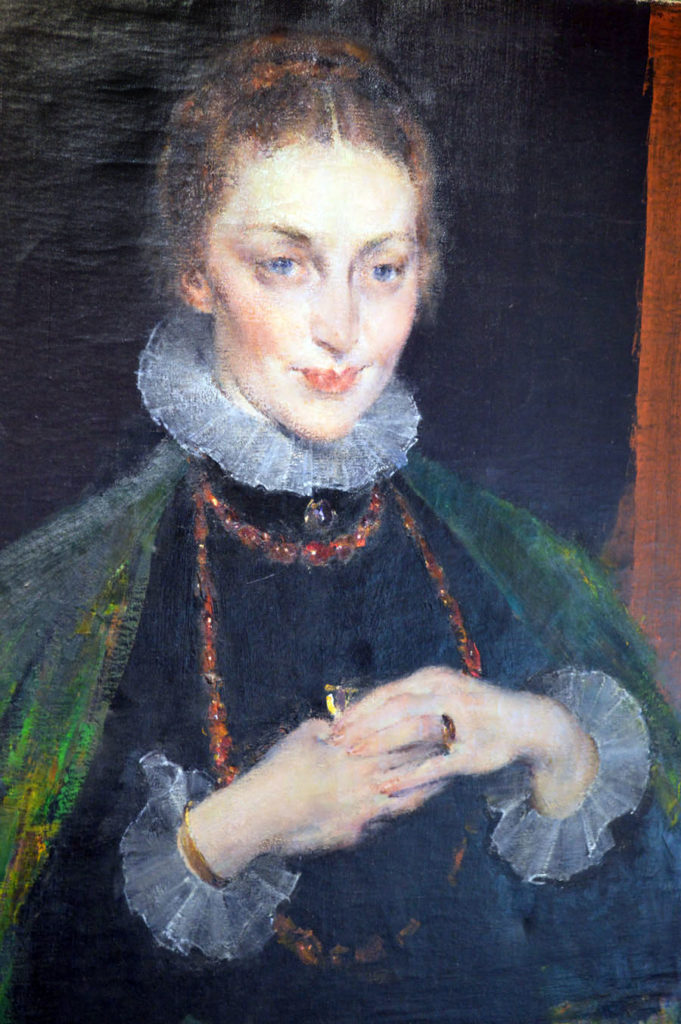
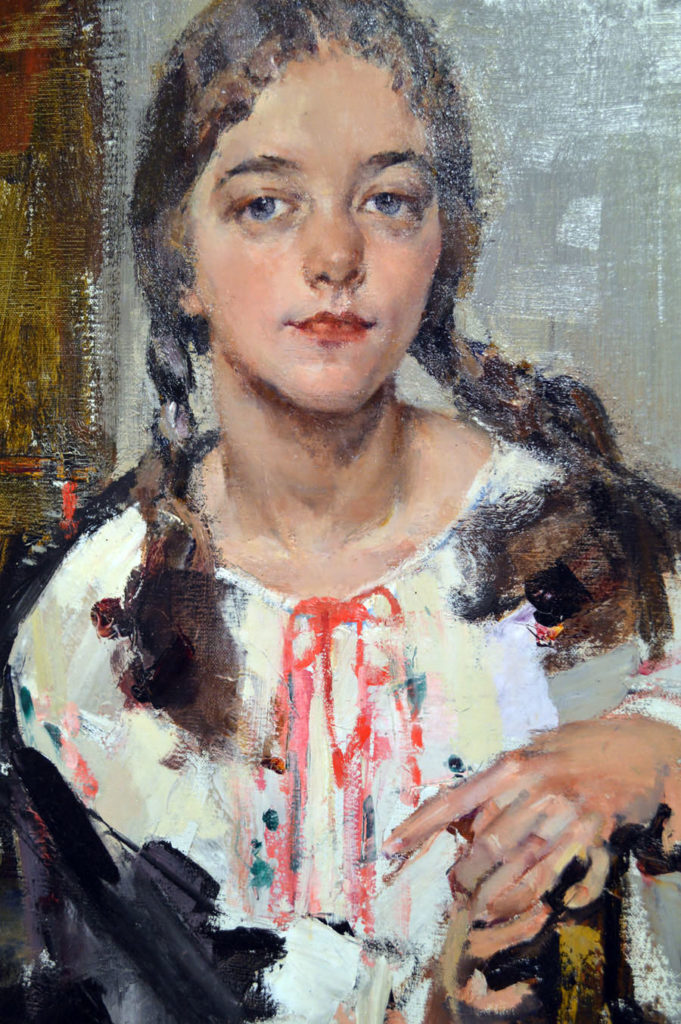
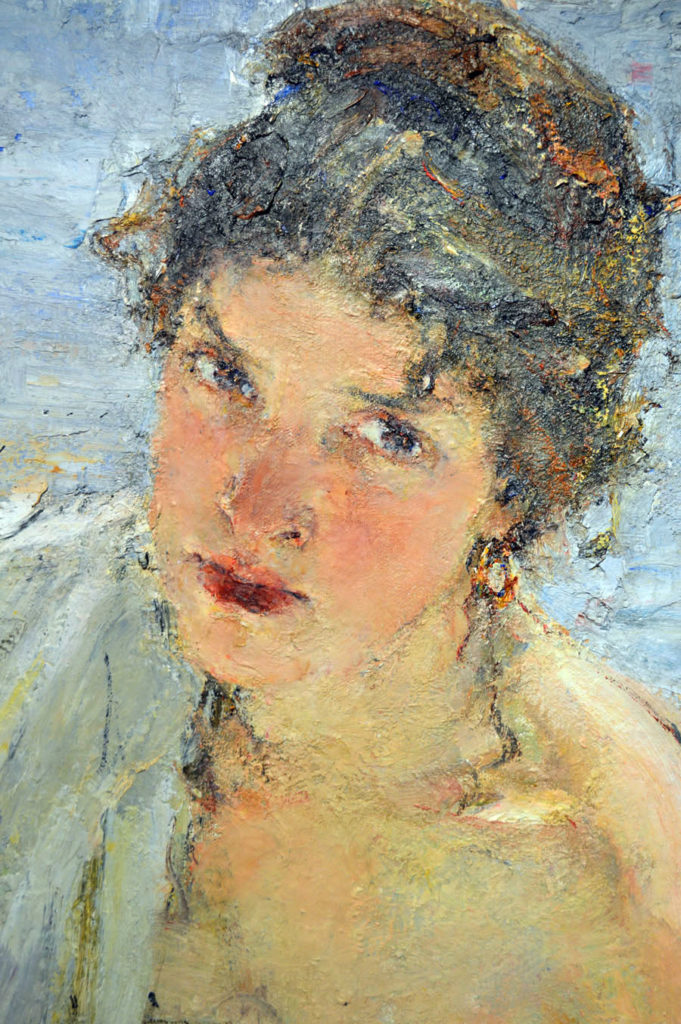
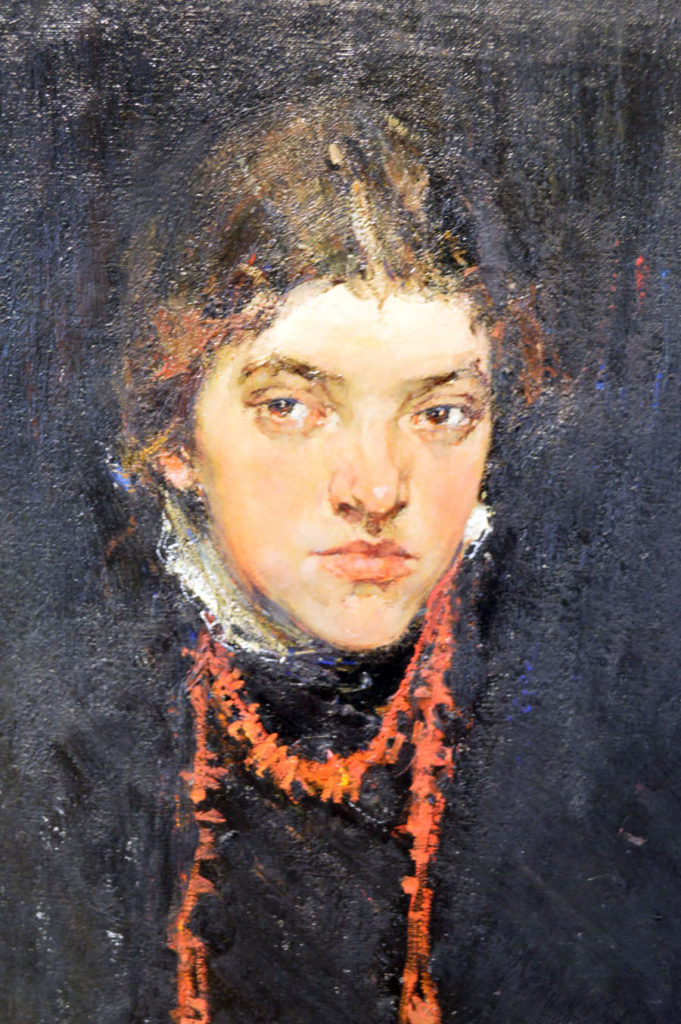
Below– Portrait of Varya Adoratskaya
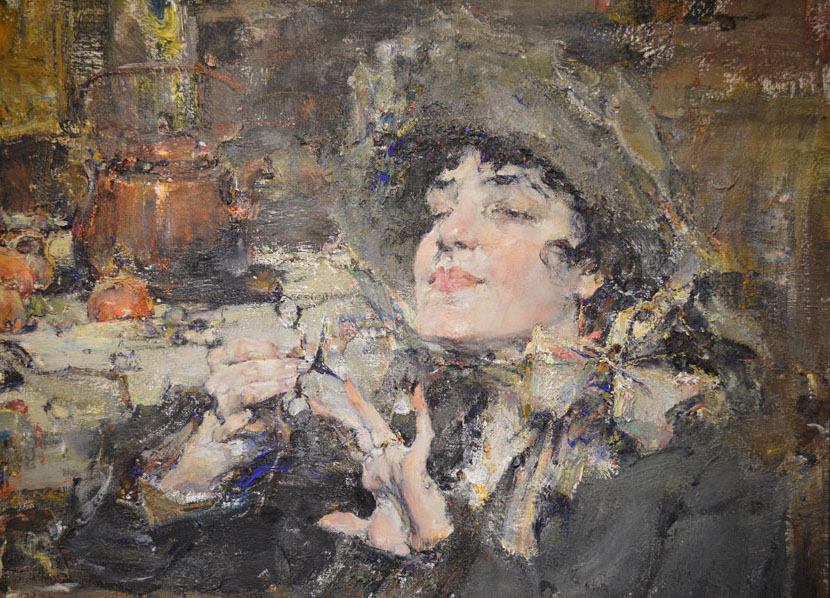
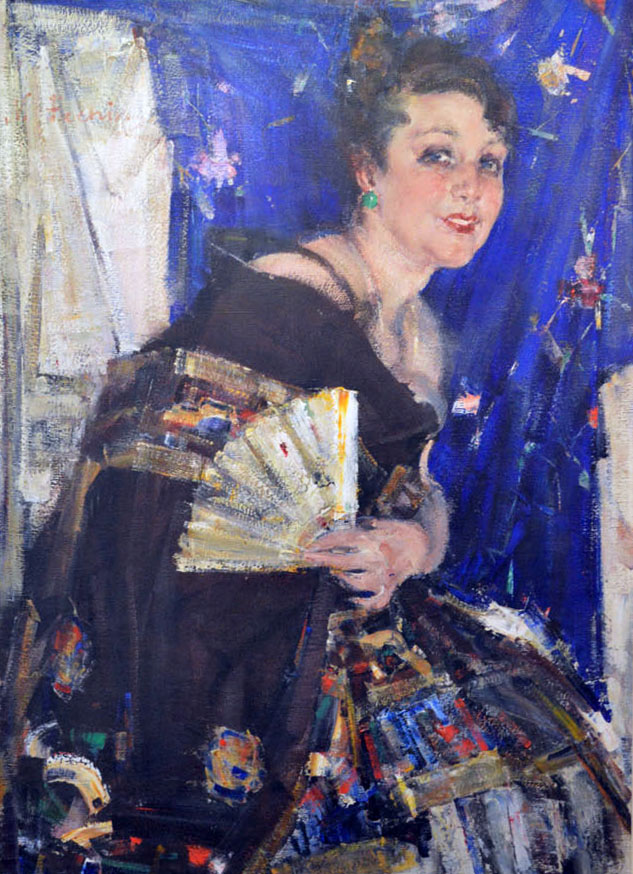
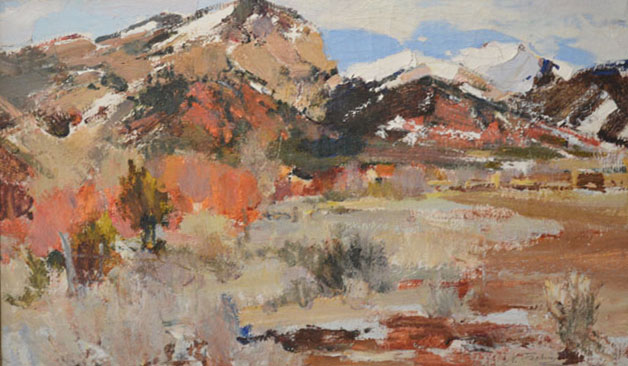
For more on his work see here.
________________________________________________
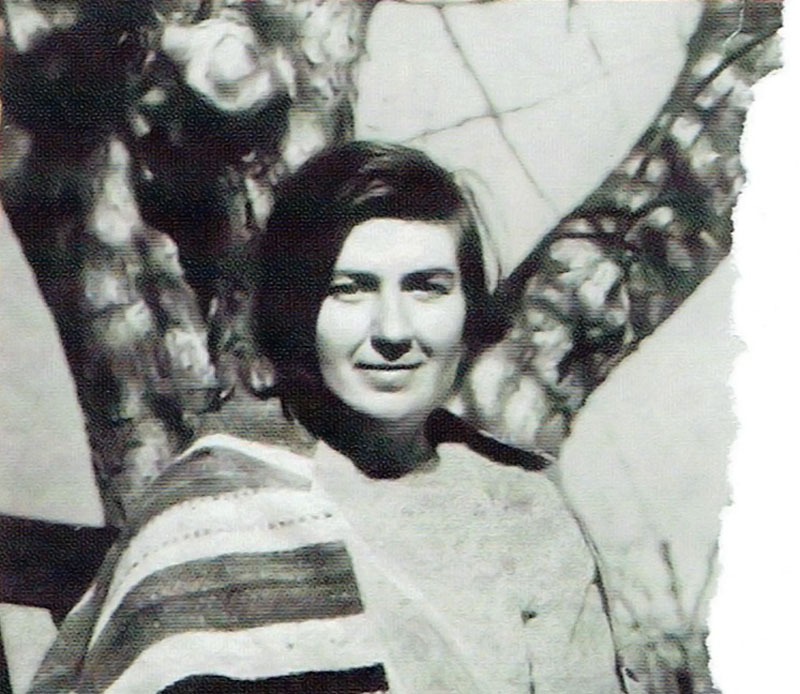
Mabel Dodge Luhan (1879 –1962) was very influential in the development of the Taos Artist Colony. She grew up in a wealthy family and lived in Florence, New York, Provincetown, Santa Barbara and eventually Taos. For more of her fascinating life see here.
In Taos she hosted a number of influential artists, writers and poets, including D.H.Lawrence, Marsden Hartley, Ansel Adams, Willa Cather, Georgia O’Keeffe, Frank Waters, Aldous Huxley, Martha Graham and many others.
She died at her home in Taos in 1962 and was buried in Kit Carson Cemetery. Dennis Hopper bought the house after having noticed it while filming Easy Rider. The house has since been designated a National Historic Landmark, operating as an historic inn and conference center.
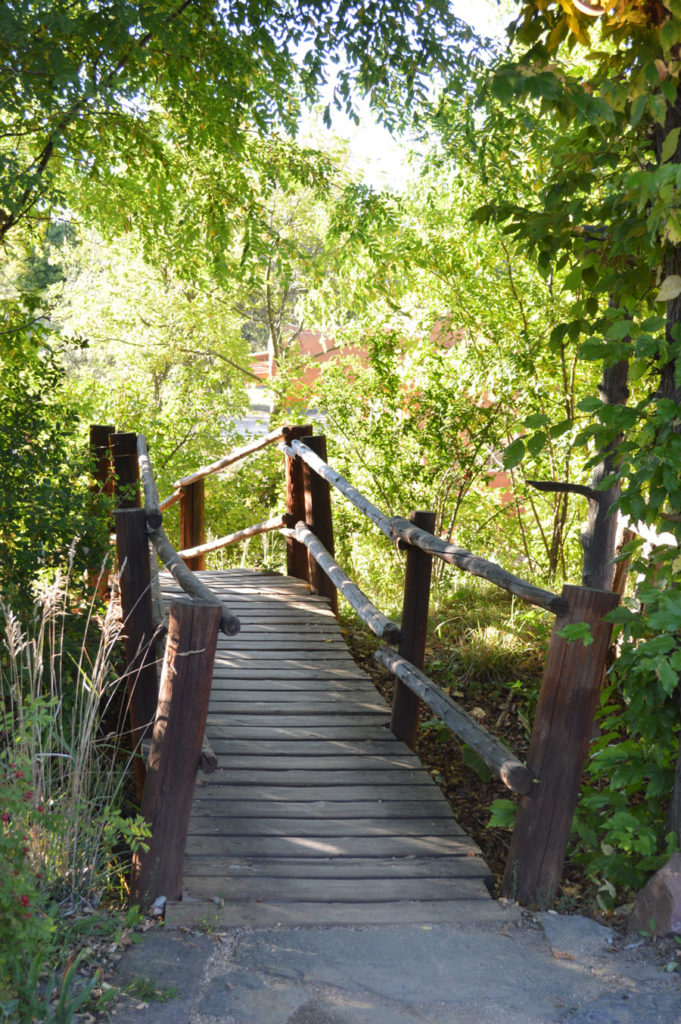
Above– an entrance to her house over the creek which runs by.
Below- another more formal entrance .
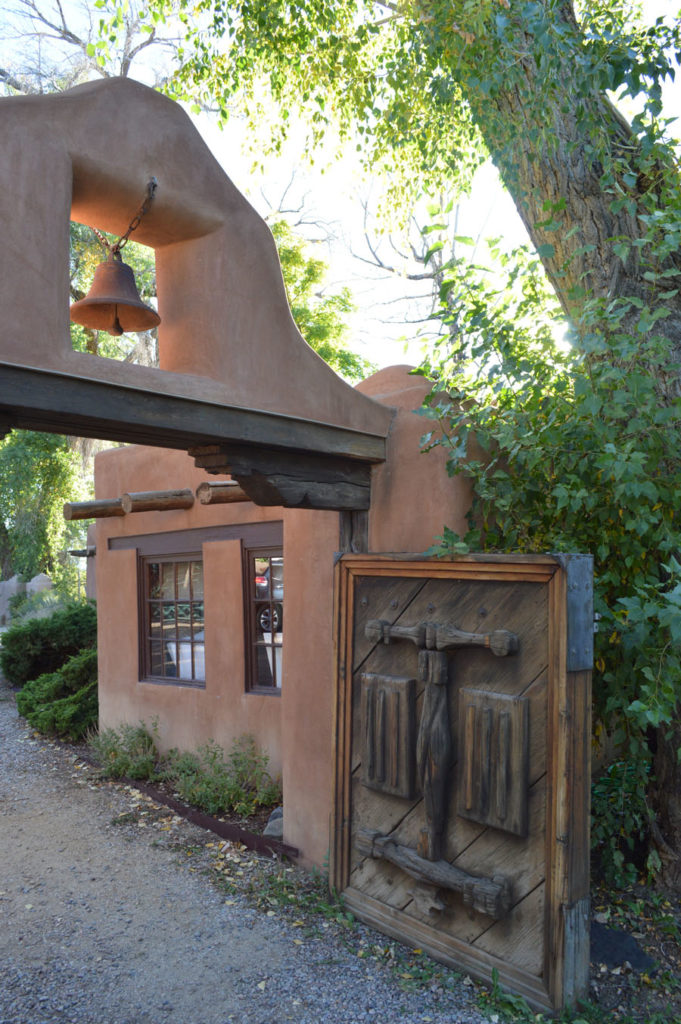
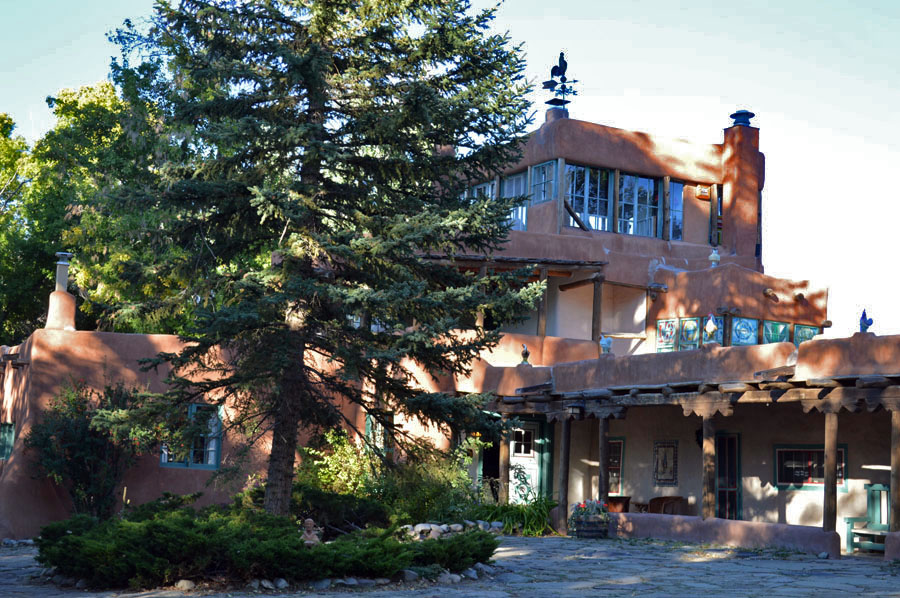
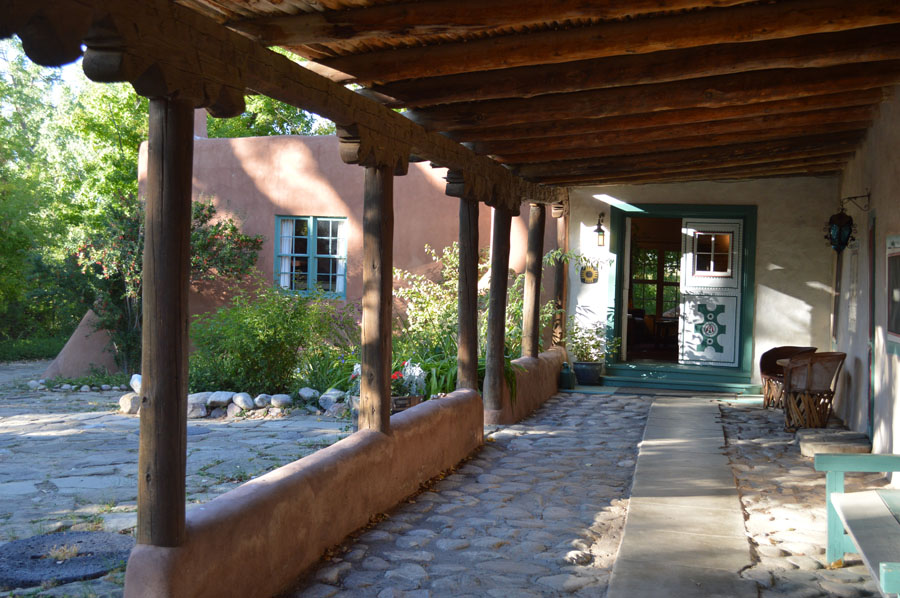
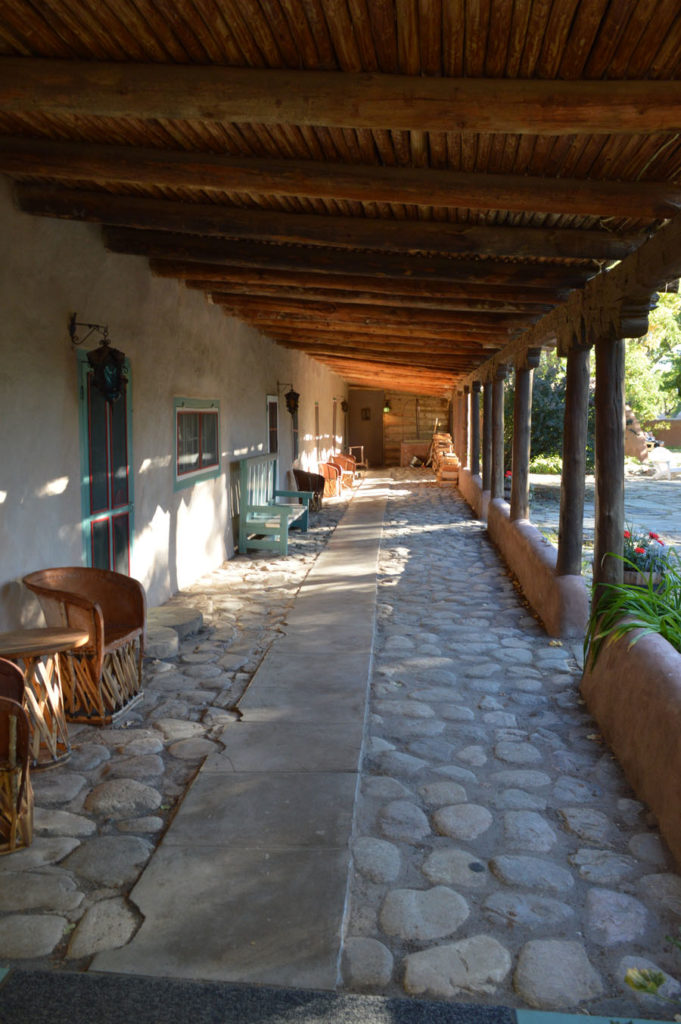
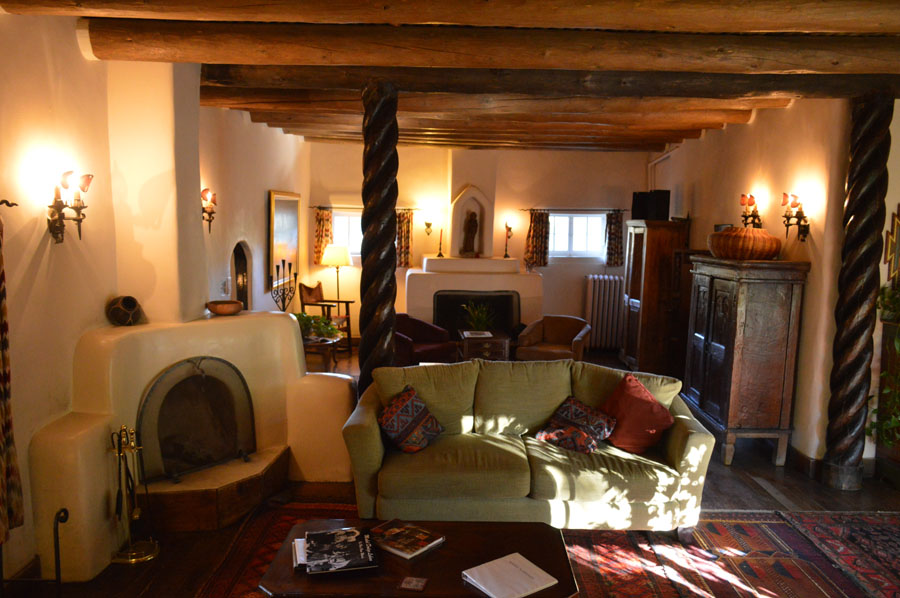
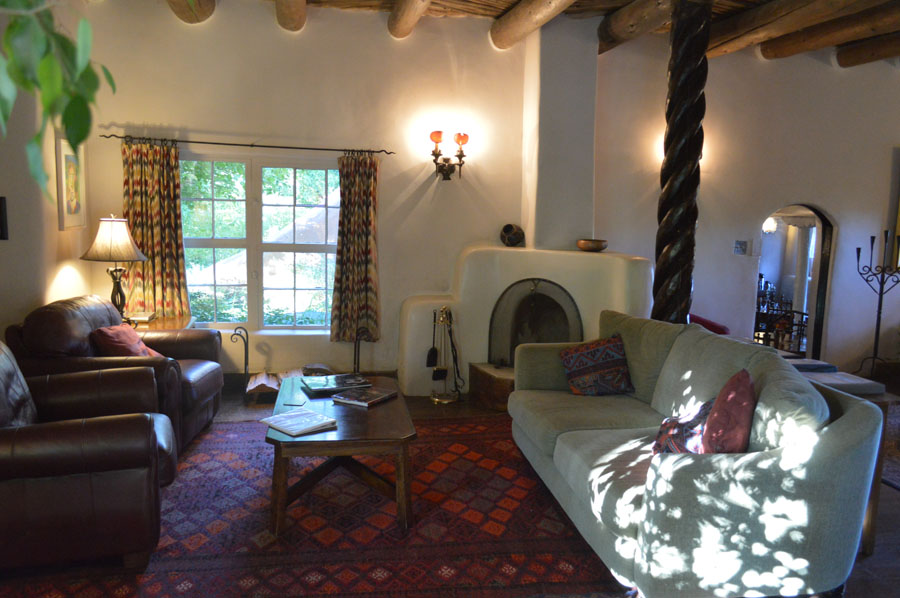
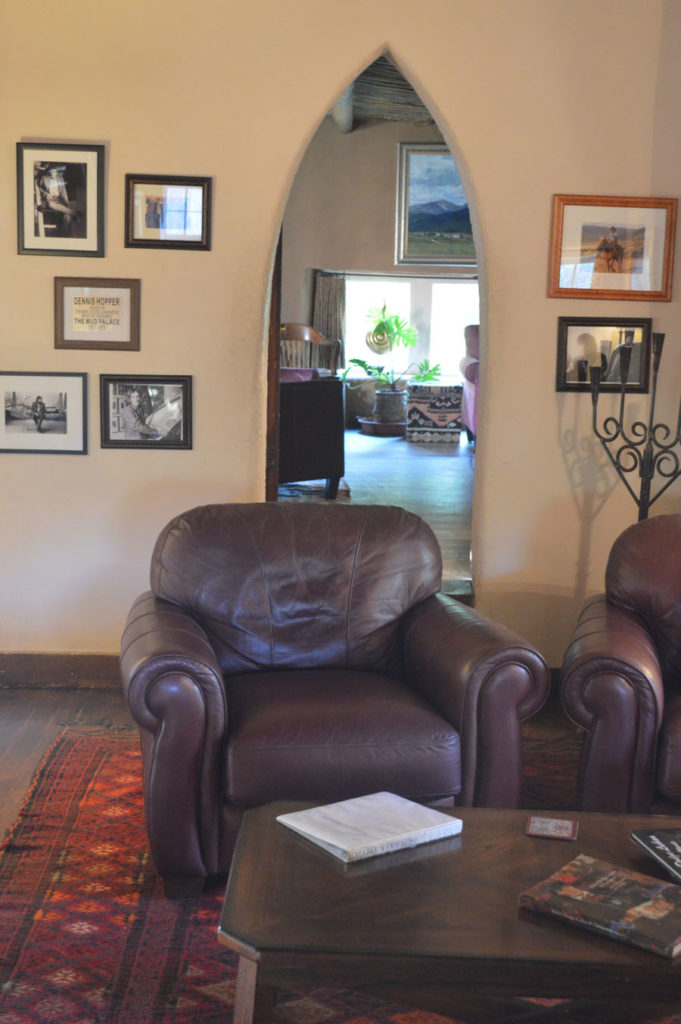
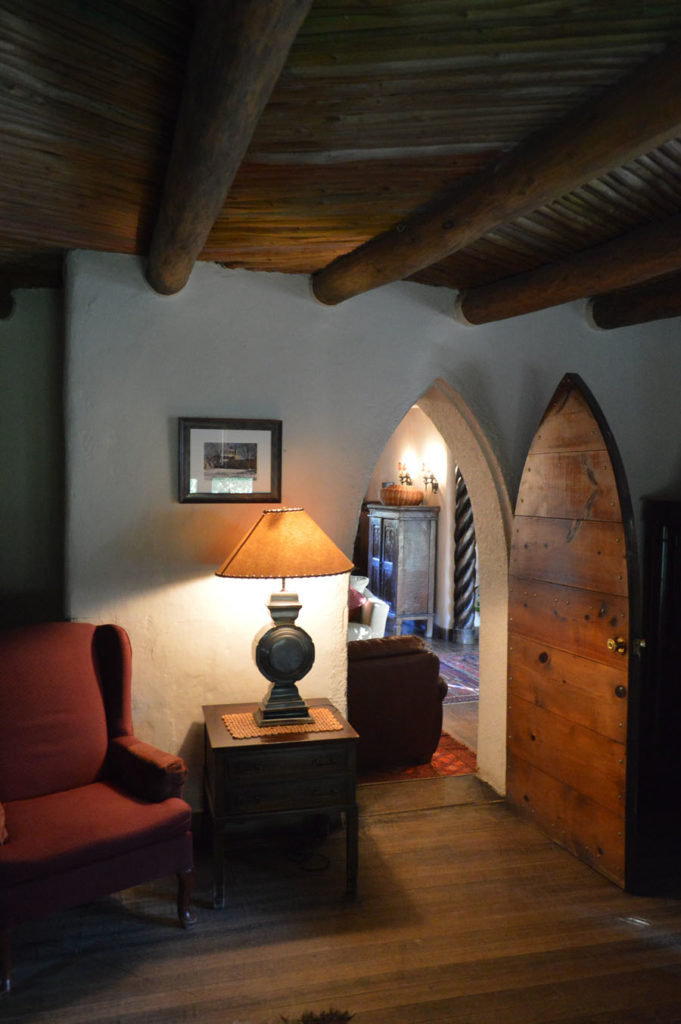
Below– The dining room and kitchen.
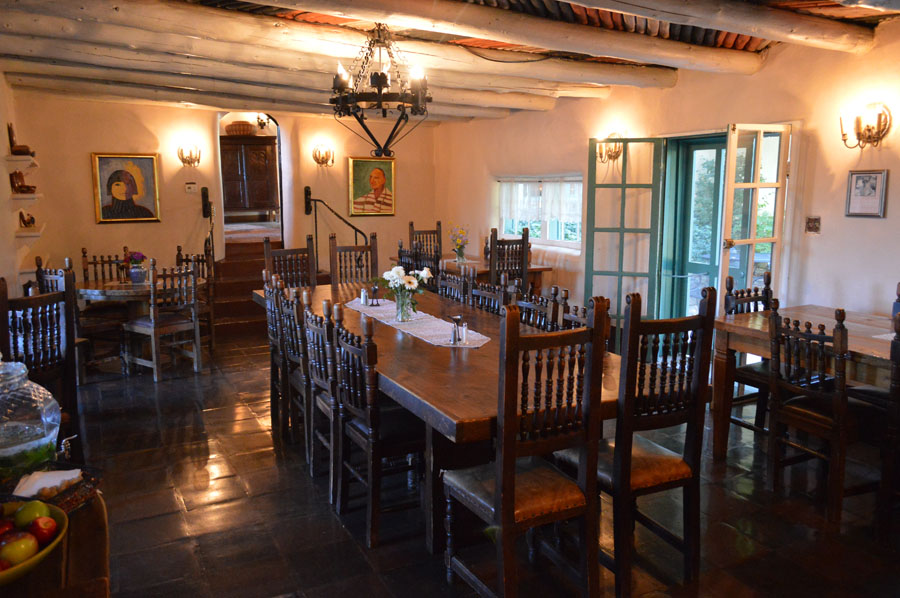
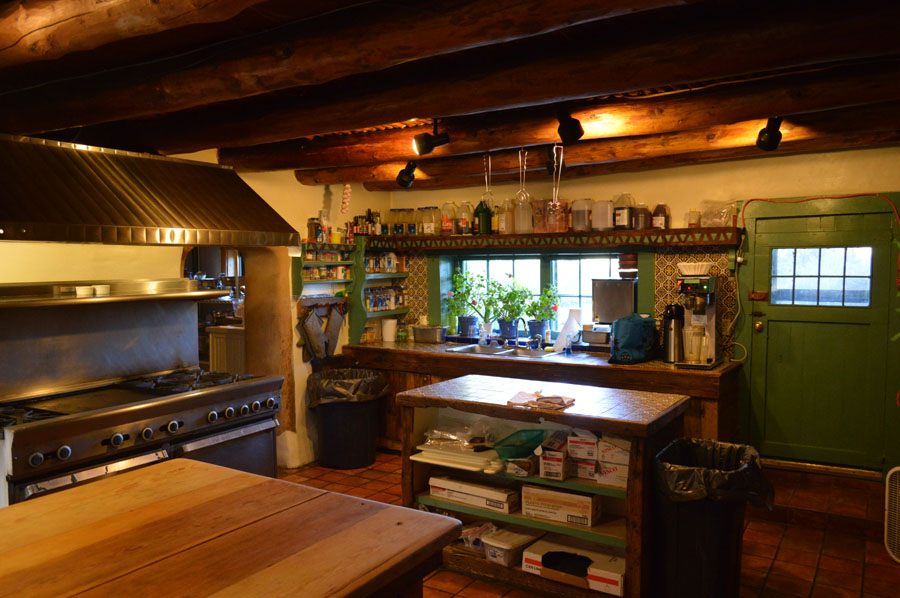
________________________